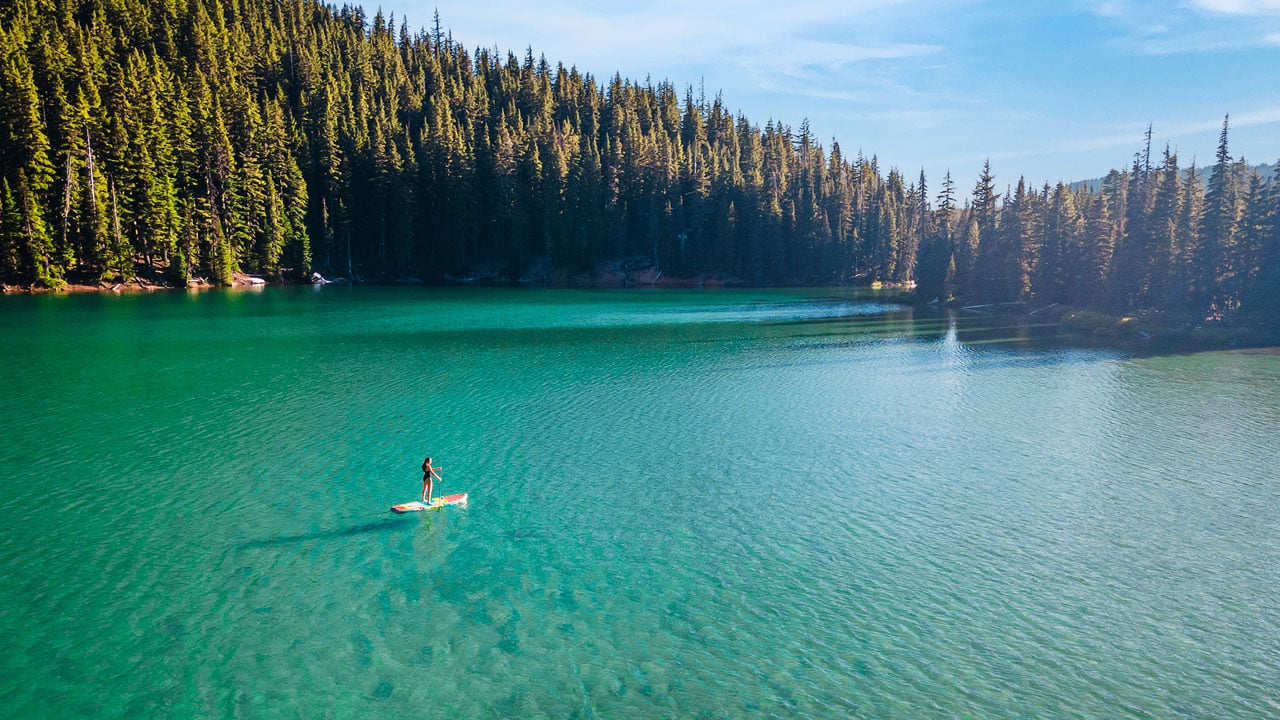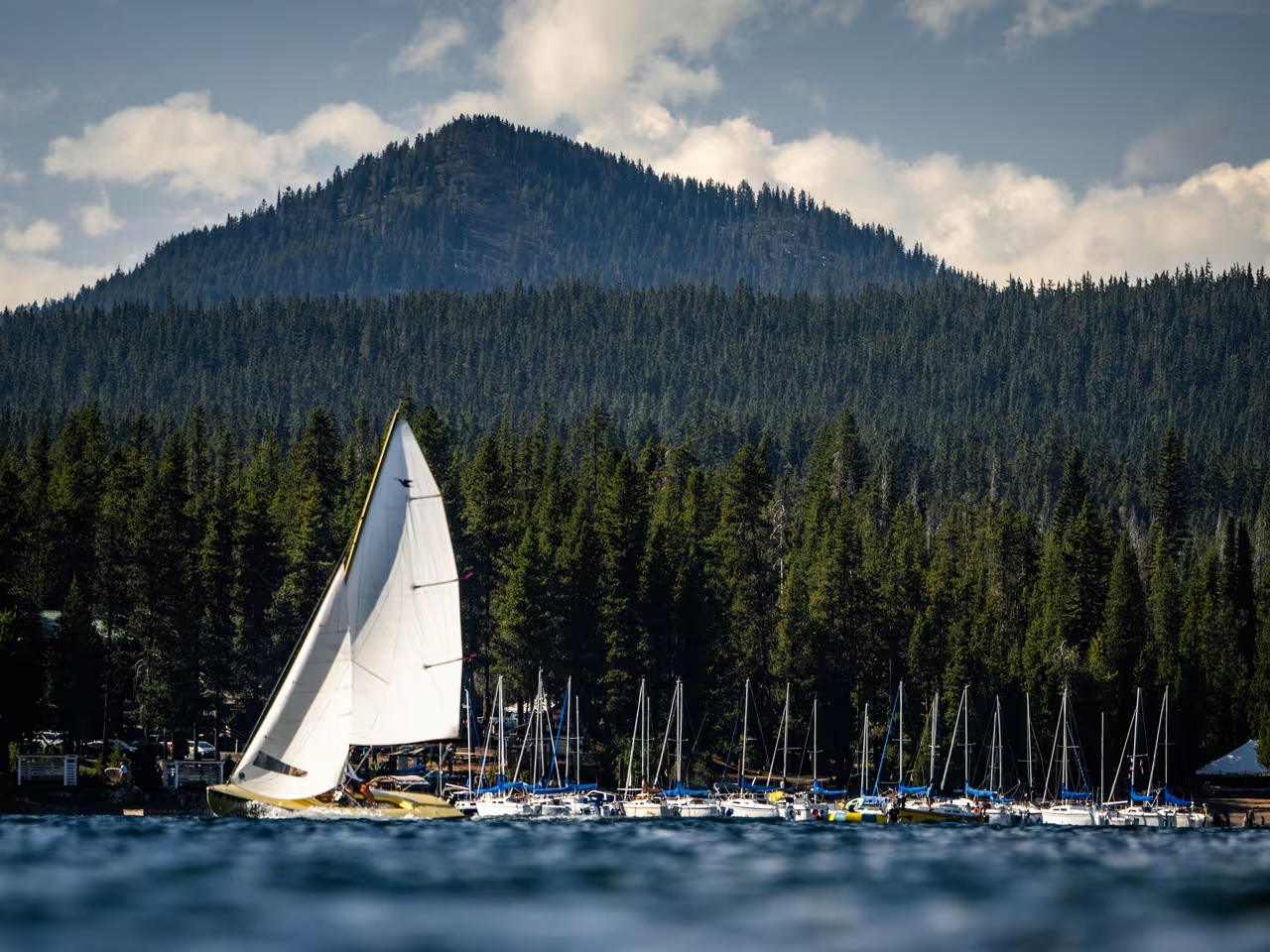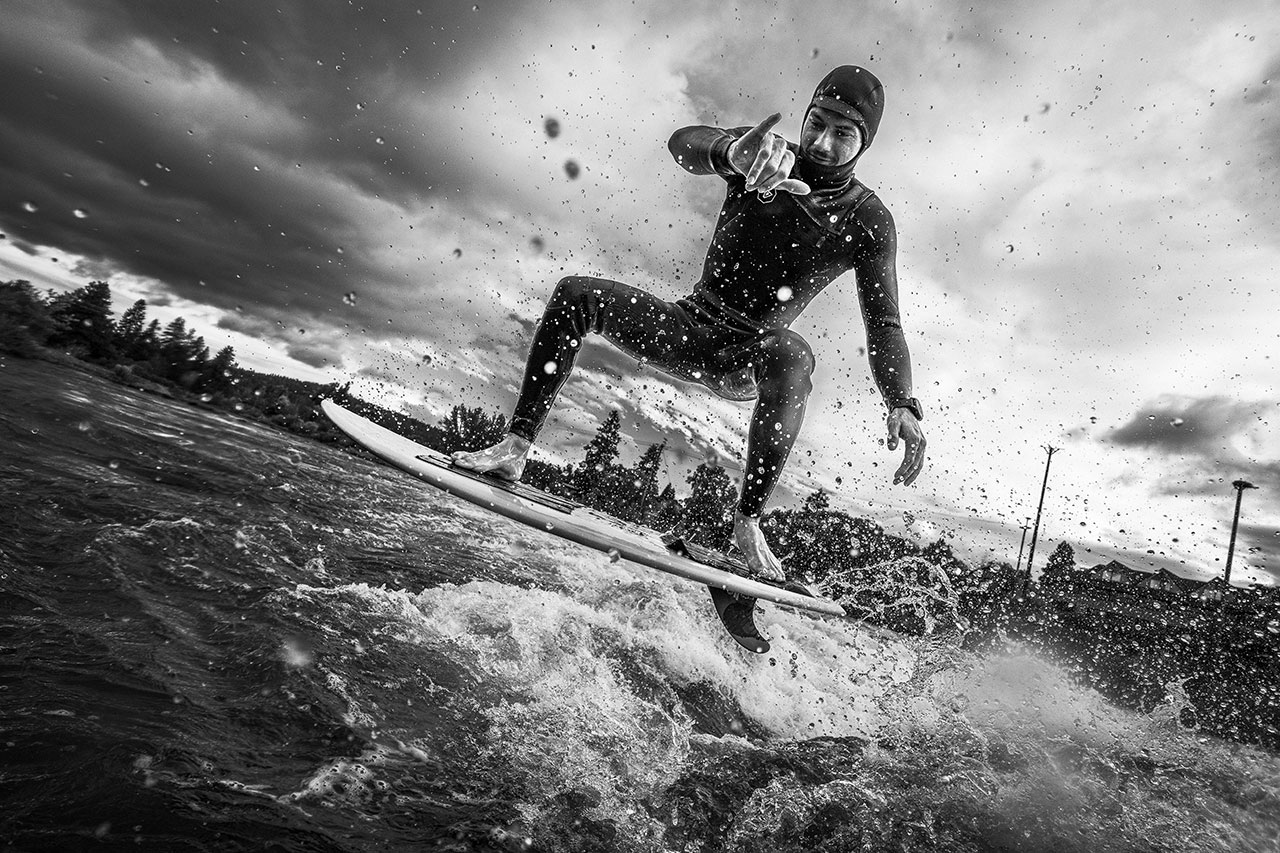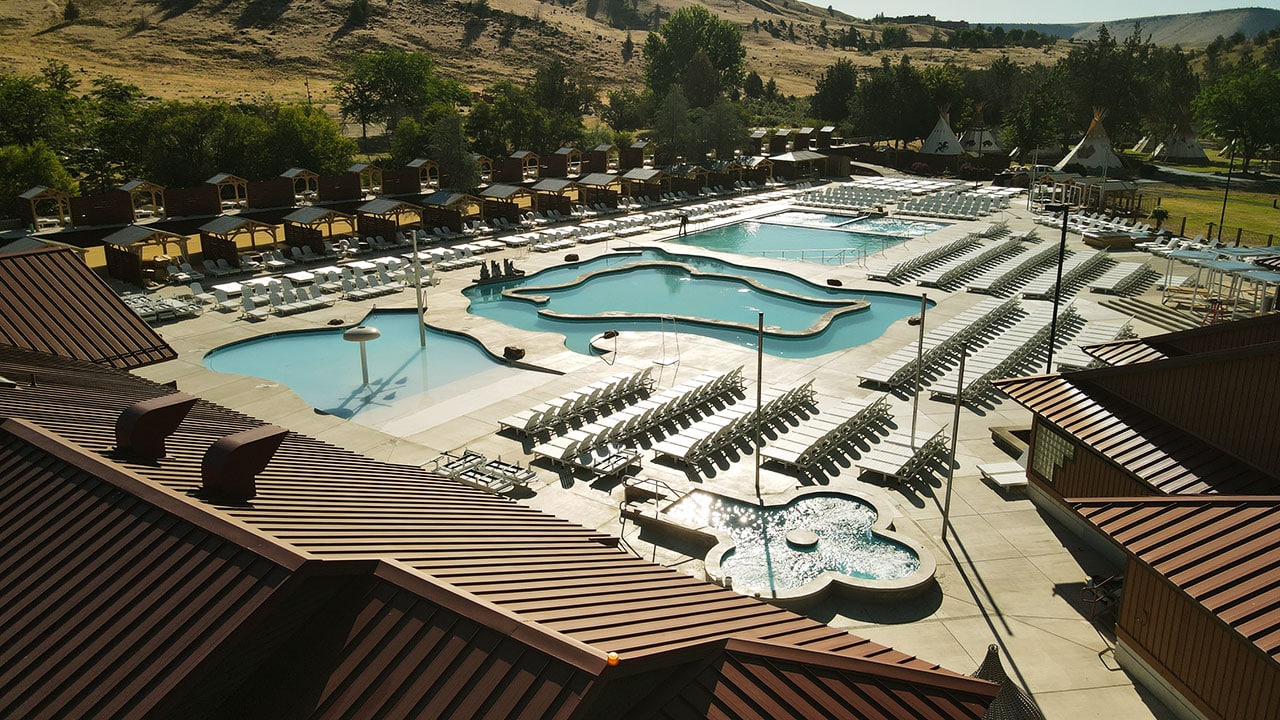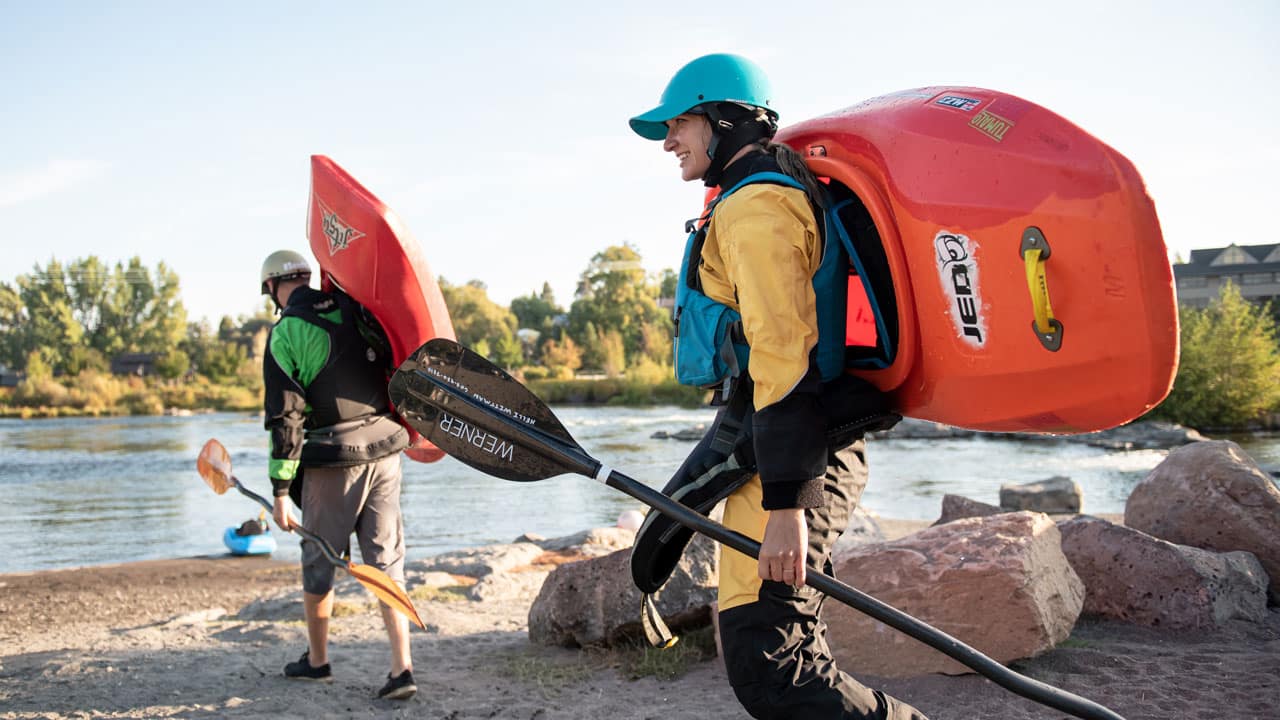It’s been suggested that Central Oregon has more stand-up paddleboarders per capita than anywhere else in the country. While it may be more urban myth than statistically supported, the sport is certainly hard to miss—from the non-stop flow of paddleboarders on the Deschutes River to its presence on Cascade lakes. Rob McDonald, owner of Bend-based Stand on Liquid, a local retailer designing and selling paddleboards and paddling accessories since 2010, attributes the popularity to the number of athletic-minded people who live here and the proximity to dozens of bodies of water found in less than an hour’s drive from Bend. Where there’s water, there’s SUP. Photo above by Jared Mantzouranis.
Next-Level Action
Stand-up paddleboarding—SUP for short—is relatively new to the outdoor scene, and was popularized in the late ’90s. Gaining traction as production boards became available in the 2000s, the International Surfing Association, founded in 1964, calls it,”America’s fastest-growing water sport.” While flatwater paddling is the most familiar and accessible way to paddleboard, it might come as a surprise that this approach is a far cry from the sport’s origins in the breaking waves of Hawaii. Hawaiian paddleboarding pioneers such as big-wave surf legends Gerry Lopez and Laird Hamilton have tested Central Oregon waters, but paddling flat water on the Deschutes River or one of the Cascade Lakes is an entryway for most folks. If you’ve had visions of paddling through a wave train or setting off on a grand adventure, there’s good news—the sport has many more dimensions, including paddling for fitness, whitewater, competition or for multiday touring. Then of course, it’s always an adventure when you add a furry companion to the mix.
Core, and More, SUP Fitness
A major draw for SUP enthusiasts is outdoor fitness, and not just to work out arms, but the core, shoulders and legs. “Stand-up paddleboarding engages muscles throughout the entire body,” said physical therapist Jenny McAteer of Resolve Physical Therapy. “It raises your heart rate, improves your aerobic capacity, overall heart function, and blood pressure, and decreases your fat stores.” The effort of keeping the board stable while compensating for a current, wind, or waves requires, what Rob McDonald described as, “subconscious micro-adjustments, engaging otherwise neglected small muscle fibers.” At the shop, he often hears paddlers describe how they feel soreness in muscles they haven’t before. “It’s a good sore,” he said, jokingly. Paddleboarding is also low-impact on the joints, which is a big plus in contrast to most outdoor sports popular in Central Oregon. Correct paddling technique should build core strength and not stress your back. To paddle for fitness, learn correct form and get plenty of time on the water.
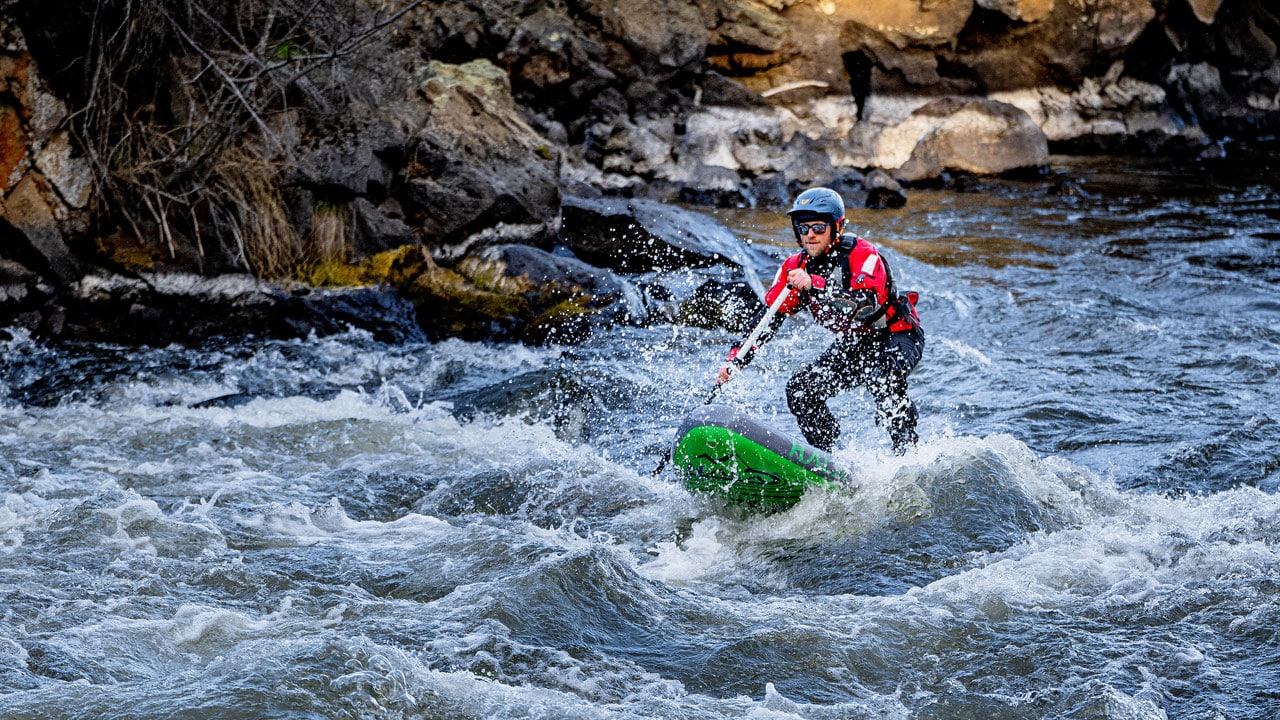
White-Knuckle Whitewater
Whitewater paddling is exactly what you might expect—paddling in rapids. Most whitewater paddlers enjoy class I-II rapids, with more advanced pros advancing to higher-grade water and even dropping into waterfalls. A paddler’s success in whitewater leans heavily on experience paddling the flats, exceptional balance and skills using the paddle, as well as an ability to read rivers to be alert to dangers, find good lines through the rapids, catch an eddy and, of course, safely fall in the midst of rapids.
While this might sound like a young person’s sport, Andy Worcester came to whitewater paddling a little later in life. At age 49, he’d skied and mountain-biked his whole life and first started playing in the waves and running the rapids on an SUP when the Bend Whitewater Park first opened—it was fun, and he was hooked. “If you run a class-two rapid on a paddleboard, there’s this insane rush,” he said. Worcester has been able to run bigger rapids incrementally, and there too is a feeling of accomplishment. Sue Fox is also a passionate whitewater paddleboarder. As manager at Tumalo Creek Kayak & Canoe, Fox supports others through the online community she created called Frisky Ripples. “I fell in love with ocean SUP surfing for the reasons so many surfers fall in love with it—you’re at one with the ocean, you’re present, and it’s just so damn fun,” adding, when she moved back to the mainland, whitewater SUPing was the closest thing to surfing she found to replicate those feelings. Outside of the physical rush, she points to the connection she feels to the river and forests, the camaraderie with fellow paddlers and the post-paddle feeling of accomplishment as highlights of the sport.
Competition Racing
Another way to add variety to an SUP repertoire is in competition. There are two basic styles of racing: Downwind racing involves racing with the wind at your back from point A to point B, with swells propelling you while surfing wave after wave. The other is SUP-obstacle paddle racing that involves paddling around buoys or other fixed points back to the starting point.
Bend’s Randall Barna was an early adopter of paddleboarding and a competitive paddler who has stood on the podium of almost every major paddleboard competition in the Northwest. While local paddleboard racing experienced a downswing following the pandemic, Barna is confident there will always be an opportunity to compete. “You get two paddlers together on any body of water and they start seeing who’s best, who’s fastest. It’s just kind of inherent in the sport,” he said. The International Surfing Association is hoping SUP will be included in the Summer Olympics in Los Angeles 2028 or Brisbane 2032.
To race closer to home, the Odell Lake Pioneer Cup, a downwind race held each July, is a great first race for those new to the sport, Barna said. To see (or compete with) elite paddleboarders, go to the Gorge Challenge race, held in July at the Columbia River Gorge.
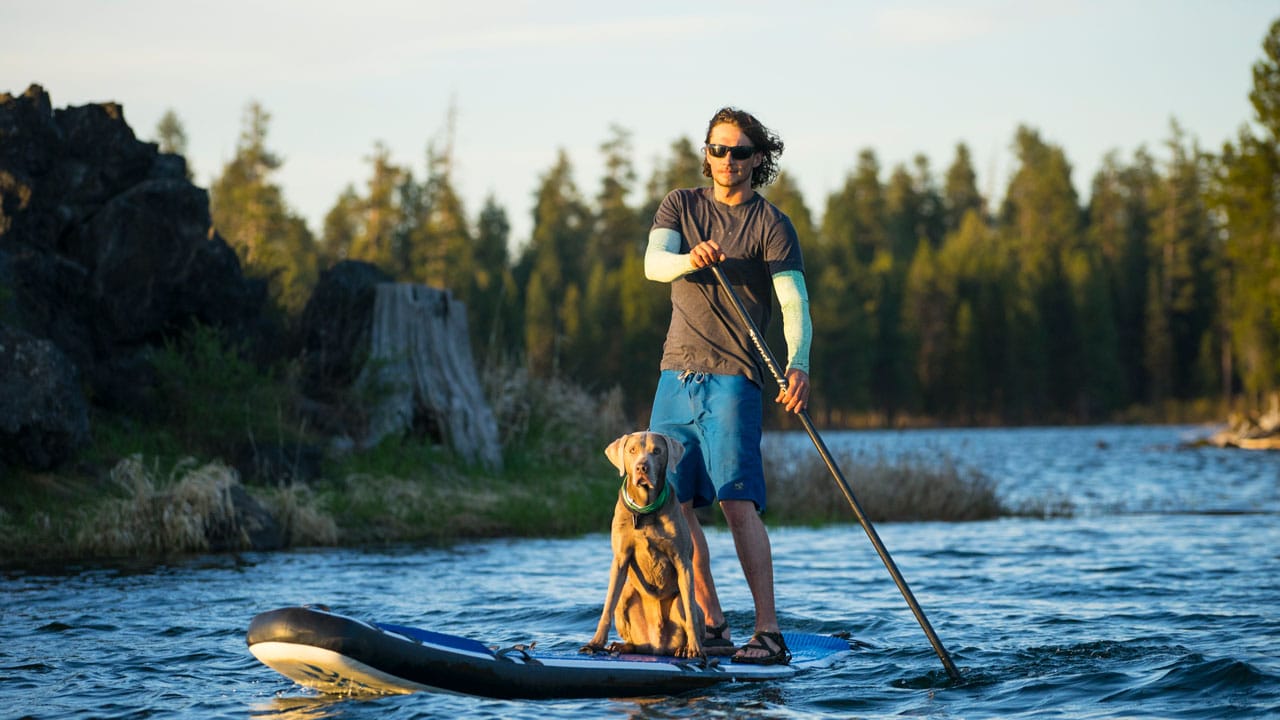
Adventure Touring
Likened to backpacking or backcountry touring, paddleboard touring involves exploration and getting away from it all. With more than 30 years working in the outdoor industry, adventurer Paul Clark has paddleboarded on more than 160 different rivers around the world, including rivers in the United States, Canada, Mexico, Costa Rica, Panama, Chile, Slovenia, New Zealand and Japan. “Oregon has the best rivers for multi-day SUP trips because of the variety, from deserts to forests. And they are numerous, including the Lower Deschutes, Rogue, Grand Ronde, John Day and the Owyhee,” he said. Paddleboard travel on rivers and lakes is very low-impact, with no need for a board ramp or a group campsite, he added. He equates this approach to light and fast backpacking. “Traveling with a small amount of gear is a wonderful way to get downriver—it’s just a small dry bag, a PFD and a backpack on a paddleboard, and off you go.”
Paul has explored Central Oregon by SUP, from 150 miles on the John Day River to all 100 miles of the Deschutes River—a trip that took 16 hours. But for a more entry-level adventure-travel experience, it doesn’t take much more than a board, paddle and a short drive up the Cascade Lakes Highway. Paddleboarding on Sparks Lake is an iconic, postcard-worthy Central Oregon moment accessible to all.
Pups on SUPS
It’s an endearing image: a lazy day of summer and a happy dog posted up at the bow of a paddleboard. J.D. Platt decided to help make this image a safe reality for SUP enthusiasts and their furry friends. Platt is a lifelong Central Oregonian and innovator of all things fun, from snowboards to SUP boards to canine entertainment. As the founder and host of J.D.’s K9 Kings Flying Dog Show. He saw an opportunity to merge his interests in pups and SUPs with an innovative paddleboard that includes improved traction and a perch for a pet. Platt created a stable, inflatable board featuring a grippy deck that covers nearly the entire surface of the board, allowing dogs to travel up and down the board. Up front, he engineered a paw perch platform, providing improved balance for a furry first mate. Having a pet companion on deck proves standup paddling isn’t limited to humans. The popularity of SUP in Bend shows there’s no coastline required either. Just add water.
Sup Safely
Whether on flatwater, ripples or rapids—paddle safely:
• Wear a lifejacket or personal floatation device (PFD).
• Dress appropriately for the weather and water temperature. Wear sunscreen.
• Bring a phone in a waterproof bag, and enable location services in case of an emergency.
Jump into whitewater paddling with tales of SUP told on The Circling Podcast. Listen at BendMagazine.com/podcast.

